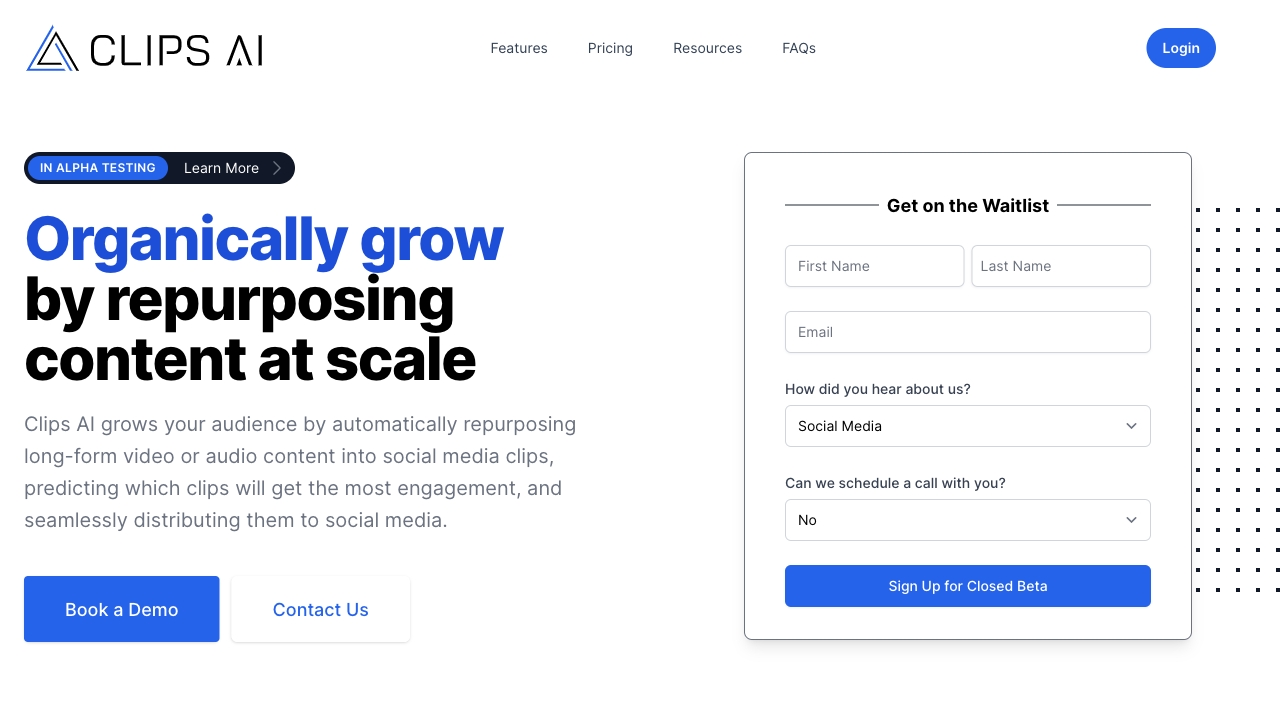Clips AI automatically creates social media clips from long-form videos like podcasts, webinars, and vlogs. This allows content marketing teams to save time and easily increases metrics on socials. Clips AI is a python library that allows developers to automatically convert long videos into clips. Clips AI is designed for audio-centric, narrative-based videos such as podcasts, interviews, speeches, and sermons. Our clipping algorithm analyzes a video's transcript to identify and create clips. Our resizing algorithm dynamically reframes videos to focus on the current speaker, converting the video into various aspect ratios.
What is Clips AI?
How to use
To use Clips AI, install the Python library, transcribe your video using WhisperX, use ClipFinder to find clips based on the transcription, and then resize the video using the resize function, providing your Pyannote HuggingFace token.
Core Features
- Automatic clip creation from long-form videos
- AI-powered transcript analysis for clip identification
- Dynamic video resizing with speaker focus
- Python library for developers
Use Cases
- Repurposing podcasts into social media clips
- Creating engaging snippets from webinars
- Generating short videos from vlogs for increased social media engagement
FAQ
What types of videos is Clips AI best suited for?
Clips AI is designed for audio-centric, narrative-based videos such as podcasts, interviews, speeches, and sermons.
What is required to resize a video using Clips AI?
A Hugging Face access token is required to resize a video since Pyannote is utilized for speaker diarization.
How does Clips AI find clips?
Our clipping algorithm analyzes a video's transcript to identify and create clips.
Pricing
Pros & Cons
Pros
- Saves time for content marketing teams
- Increases social media engagement
- Automates video repurposing
- Offers a Python library for customization
- Supports audio-centric, narrative-based videos
Cons
- Requires Python knowledge for library usage
- Needs a Hugging Face access token for resizing
- Relies on accurate transcriptions for clip identification
- Requires installation of dependencies like WhisperX and ffmpeg
